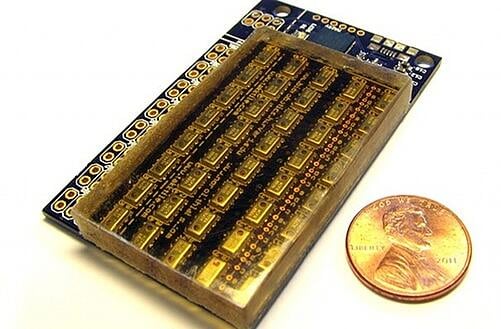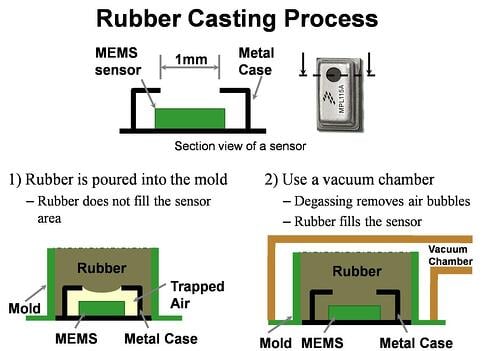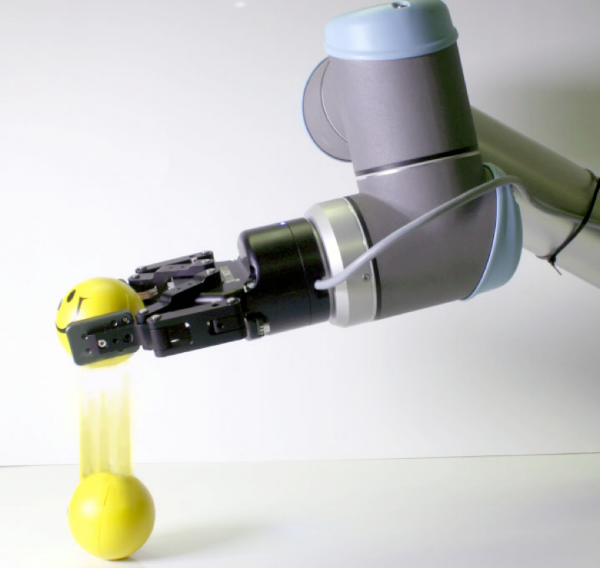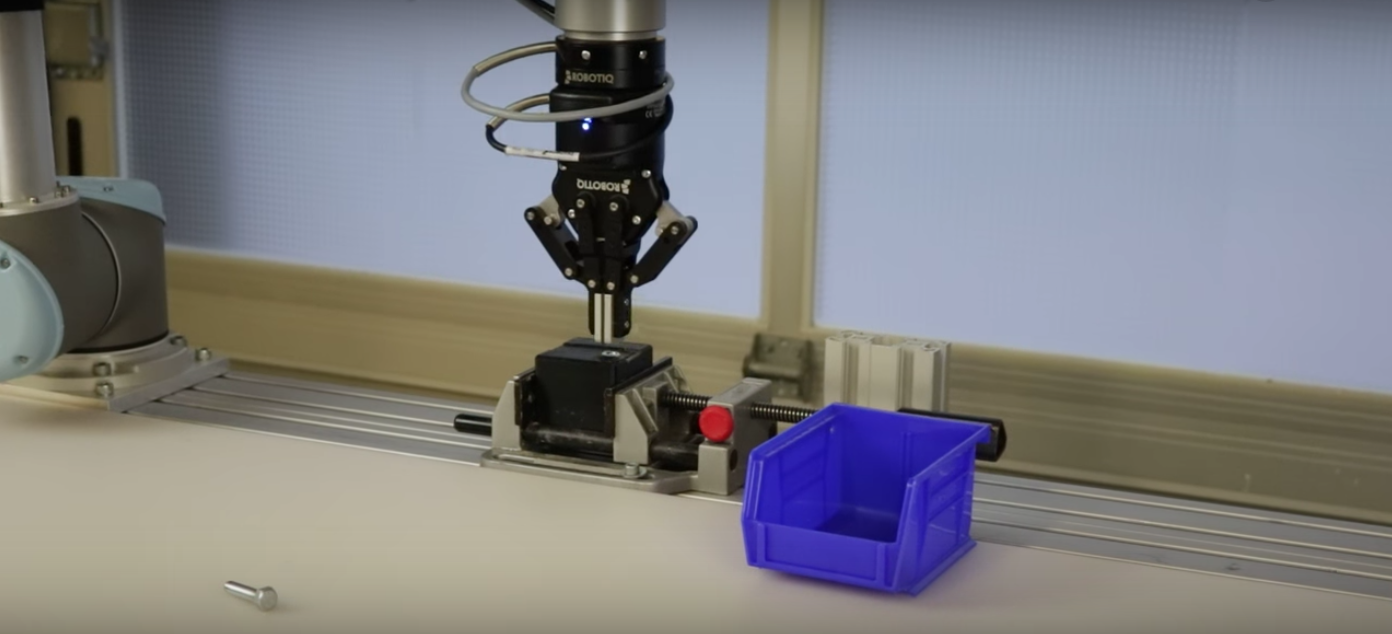Tactile Sensors for Robot Grippers

Posted on Jun 10, 2014 8:00 AM. 4 min read time
Robots can do an extremely large number of tasks. They can complete lighter tasks such as manipulating electronics or handling heavier weighted objects, such as cars. One of the weaknesses of all robots is generally their sensitivity. In fact, no robot nor robotic gripper can detect what it is handling. For sure they can have feedback, such as current in the motor or force being applied on a certain surface, but in any case they can’t feel what they are handling. This is what TakkTile is working on. They have developed a technology to provide a sense of touch to the robot gripper at a low price.
The concept has been developed by the Harvard Biorobotics Laboratory. The goal was to basically develop a simple and cheap way to give a sense of feeling to a robotic hand. The tactile sensors are small and can be fitted on a very large variety of geometries.
"Despite decades of research, robotic tactile sensing hasn't moved into general use because it's been expensive and fragile." - Leif Jentoft student at SEAS.
Until now the cost of the sensors was several thousands of dollars and was very fragile which reduced the speed of the robot motion. With this new concept, the manufacturing process and the firmware used is cheap. The tactile sensor uses tiny barometers, that are largely used in GPS and mobile phones, to monitor the air pressure and determine altitude. Since these barometers are widely used, the price is quite low and this allows Takktile to use them in their sensors. The barometer consists of a Wheatstone bridge that is stuck to a diaphragm, which deforms when there is pressure applied on it. Several tactile sensors are then arranged on a particular application and it’s now possible to monitor what the end effector is handling. Whether you want to know where the object is in the robot gripper or how intense you are applying pressure, TakkTile sensors can provide all of this information.

''The traditional technology also uses very specialized construction techniques, which can slow down your work. Now, Takktile changes that because it's based on much simpler and cheaper fabrication methods.'' - Leif Jentoft student at SEAS.
On the other hand, robust manufacturing can now provide more intense usage of tactile sensors. In fact, with its rubber structure, the tactile sensor can accept large amounts of pressure and still work properly. The sensor is claimed to resist a load of 25 lbs.
''It normally costs about $16,000, give or take, to put tactile sensing on a research robot hand. That really limits where people can use it.'' - Leif Jentoft student at SEAS.

The manufacturing process consists of molding the rubber over the gauge using a vacuum process. This method allows the strength gauge to be protected from any hazardous environments or impact. As the mold is removed, the rubber is the interface between the environment and the barometer. When an object is grabbed, the rubber is deformed and it applies a certain pressure on the strength gauge. The microprocessor can interpret the pressure dispersion and actually feel what the end effector is handling.
As this technology is getting cheaper, more companies will integrate it into their robotic grippers. This can be a way to have direct feedback of the gripping force without using the current of the motor or other indirect data. This will be the real way to find out exactly what force the gripper is applying to the object. This can be a game changer in some lighter applications. Another advantage to this technology is that it can monitor the exact position of the object in the robot gripper. This can also be important for very precise applications, such as putting a wire in a small hole. Since you know the exact position of the object, the task becomes a lot easier. Have a look at the applications and check if they might suit your needs.
Here are some other projects that have been developed for our 3-Finger Adaptive Gripper to give robots a sense of touch.
- Integrated Tactile Sensors for Robotic Gripper from ETS
- Tactile Sensors from Stanford University BDML









Leave a comment